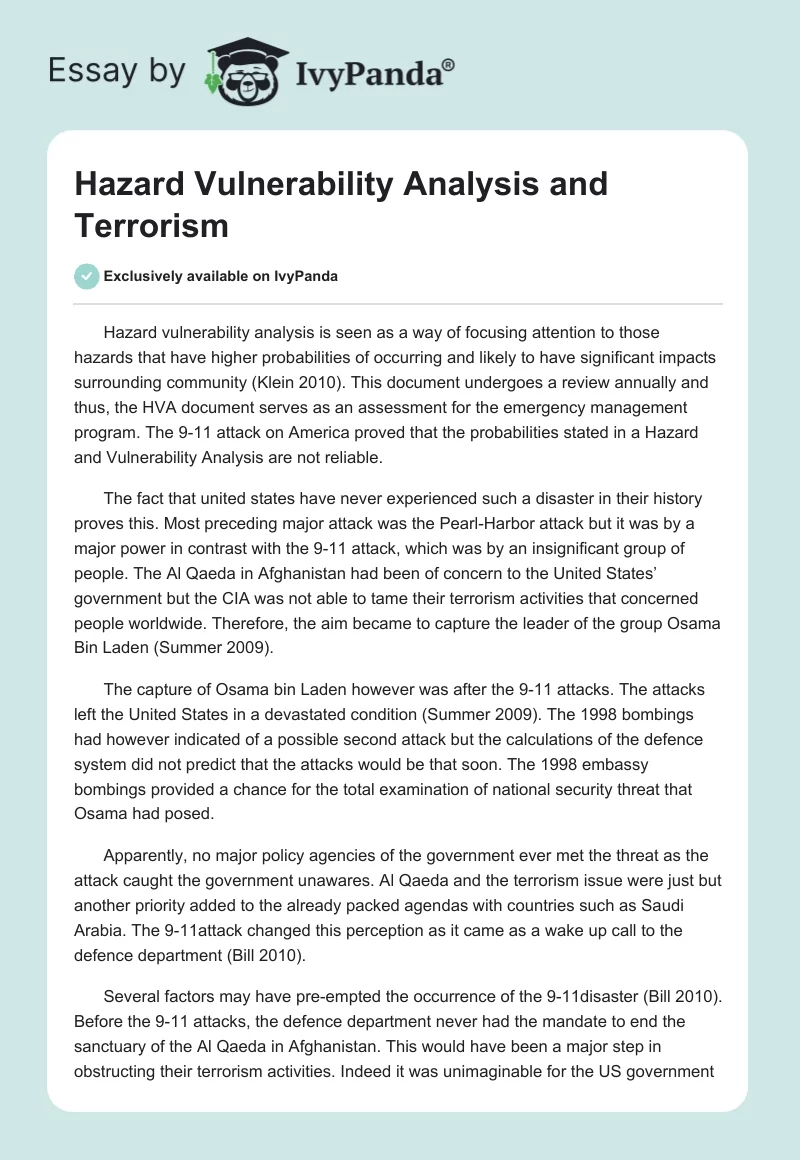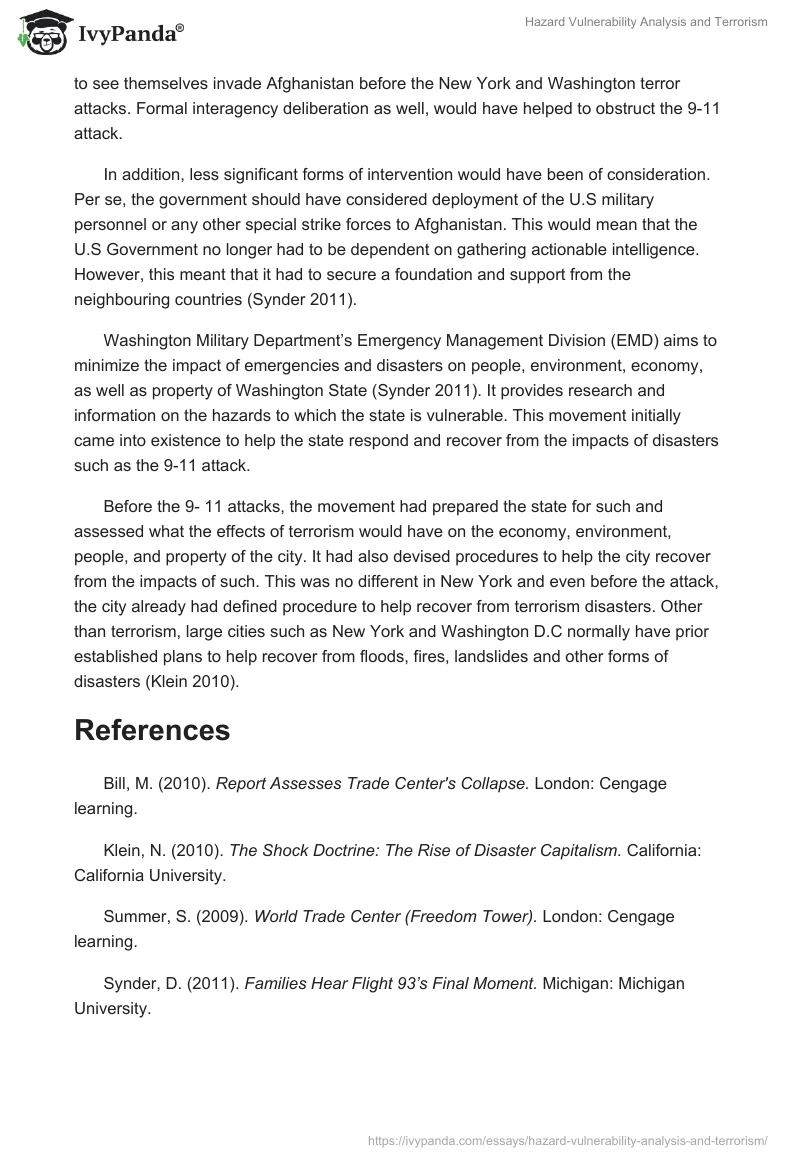Hazard vulnerability analysis is seen as a way of focusing attention to those hazards that have higher probabilities of occurring and likely to have significant impacts surrounding community (Klein 2010). This document undergoes a review annually and thus, the HVA document serves as an assessment for the emergency management program. The 9-11 attack on America proved that the probabilities stated in a Hazard and Vulnerability Analysis are not reliable.
The fact that united states have never experienced such a disaster in their history proves this. Most preceding major attack was the Pearl-Harbor attack but it was by a major power in contrast with the 9-11 attack, which was by an insignificant group of people. The Al Qaeda in Afghanistan had been of concern to the United States’ government but the CIA was not able to tame their terrorism activities that concerned people worldwide. Therefore, the aim became to capture the leader of the group Osama Bin Laden (Summer 2009).
The capture of Osama bin Laden however was after the 9-11 attacks. The attacks left the United States in a devastated condition (Summer 2009). The 1998 bombings had however indicated of a possible second attack but the calculations of the defence system did not predict that the attacks would be that soon. The 1998 embassy bombings provided a chance for the total examination of national security threat that Osama had posed.
Apparently, no major policy agencies of the government ever met the threat as the attack caught the government unawares. Al Qaeda and the terrorism issue were just but another priority added to the already packed agendas with countries such as Saudi Arabia. The 9-11attack changed this perception as it came as a wake up call to the defence department (Bill 2010).
Several factors may have pre-empted the occurrence of the 9-11disaster (Bill 2010). Before the 9-11 attacks, the defence department never had the mandate to end the sanctuary of the Al Qaeda in Afghanistan. This would have been a major step in obstructing their terrorism activities. Indeed it was unimaginable for the US government to see themselves invade Afghanistan before the New York and Washington terror attacks. Formal interagency deliberation as well, would have helped to obstruct the 9-11 attack.
In addition, less significant forms of intervention would have been of consideration. Per se, the government should have considered deployment of the U.S military personnel or any other special strike forces to Afghanistan. This would mean that the U.S Government no longer had to be dependent on gathering actionable intelligence. However, this meant that it had to secure a foundation and support from the neighbouring countries (Synder 2011).
Washington Military Department’s Emergency Management Division (EMD) aims to minimize the impact of emergencies and disasters on people, environment, economy, as well as property of Washington State (Synder 2011). It provides research and information on the hazards to which the state is vulnerable. This movement initially came into existence to help the state respond and recover from the impacts of disasters such as the 9-11 attack.
Before the 9- 11 attacks, the movement had prepared the state for such and assessed what the effects of terrorism would have on the economy, environment, people, and property of the city. It had also devised procedures to help the city recover from the impacts of such. This was no different in New York and even before the attack, the city already had defined procedure to help recover from terrorism disasters. Other than terrorism, large cities such as New York and Washington D.C normally have prior established plans to help recover from floods, fires, landslides and other forms of disasters (Klein 2010).
References
Bill, M. (2010). Report Assesses Trade Center’s Collapse. London: Cengage learning.
Klein, N. (2010). The Shock Doctrine: The Rise of Disaster Capitalism. California: California University.
Summer, S. (2009). World Trade Center (Freedom Tower). London: Cengage learning.
Synder, D. (2011). Families Hear Flight 93’s Final Moment. Michigan: Michigan University.


